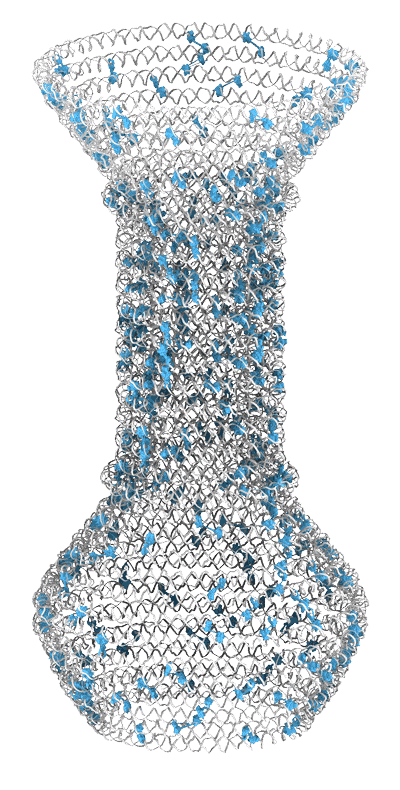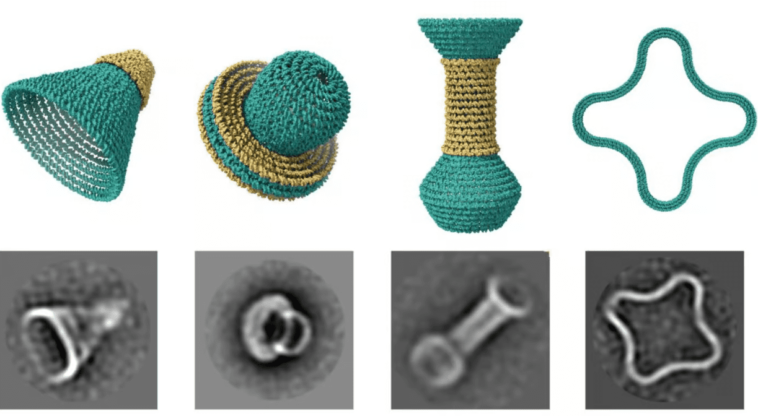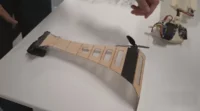DNA is the blueprint for life as we know it (at least most life). Carrying the genetic instructions for living organisms, DNA is essential for our development and growth as biological organisms. But DNA can double as something completely different: a construction material.
The human body doesn’t really like it when foreign DNA enters the body. If an organism containing foreign DNA enters, it can trigger an immune response. But if ‘naked’ foreign DNA enters, it would simply become absorbed and even used as a nutrient. So researchers are thinking we could use this to our advantage and repurpose DNA as a carrier.
Of course, getting DNA to do things as we want is not exactly easy. In addition to being an unconventional material to work with, DNA strands are very small — which makes the accomplishment of Duke University and Arizona State University all the more impressive.
The DNA nanostructures were assembled and imaged by co-authors Raghu Pradeep Narayanan and Abhay Prasad in professor Hao Yan’s lab at Arizona State. They created small, pottery-like structures from DNA — vases, bowls, and hollow spheres. With nanometer precision, they even put these structures inside one another, much like a Russian doll.

Each of these objects is so tiny that you could fit 50,000 of them on the head of a pin — they’re no more than two-millionths of an inch across. Developing something so small wasn’t easy, and it started with an innovative piece of software.
Incremental knowledge
As it so often happens in modern science, the finding didn’t come all at once: it was a process of building bit by bit and making incremental progress.
Duke PhD student Dan Fu and his adviser John Reif developed a software called DNAxiS — it’s a free online tool that comes equipped with tutorials and a GitHub repository. This software uses a method described in 2011 by Yan, which works by coiling a long strand of DNA double helix into concentric rings that are then stacked to make the contour of the desired objects. Smaller DNA strands are used to bind and staple the long strands in the desired shape.
It’s not the first time small structures have been built from DNA. Back in the 1980s, researchers were already experimenting with simple shapes like cubes or pyramids — but rounded structures like pots have proven to be much more difficult. The new study expands the range of shapes that can be designed with the help of DNA, and to make it all the more exciting, DNAxiS is open source, which means researchers and companies from all around the world can use it and build on it.
“If there are too few, or if they’re in the wrong position, the structure won’t form correctly,” Fu said. “Before our software, the curvature of the shapes made this an especially difficult problem.”
The software takes a desired model as an input and then, within a day, outputs a list of DNA strands that can form the desired output, by mixing the four bases that make up DNA: adenine (A), cytosine (C), guanine (G), and thymine (T). That’s why researchers designed an array of different DNA-made objects to prove the robustness of the approach.
The structures aren’t just for the sake of design. Because the shape can be tweaked into more rounded, natural structures, the approach could be used to create tiny containers for delivering drugs or for other medical applications. The software could also be used to create micro-molds casting metal nanoparticles with specific shapes for solar cells and other applications.
It may still be some time before the practical applications actually start emerging, but “it’s a big step forward in terms of automated design of novel three-dimensional structures,” Reif said.
Journal Reference: “Automated Design of 3D DNA Origami With Non-Rasterized 2D Curvature,” Daniel Fu, Raghu Pradeep Narayanan, Abhay Prasad, Fei Zhang, Dewight Williams, John S. Schreck, Hao Yan, John Reif. Science Advances, Dec. 23, 2022. DOI: 10.1126/sciadv.ade4455




GIPHY App Key not set. Please check settings